How Forestry Professionals Choose the Right Tree Marking Paint
Revolutionizing Forestry Management with HIGHBALL® Tree Marking Paint's One-Pass Marking System
This Section Covers Resources
Revolutionizing Forestry Management with HIGHBALL® Tree Marking Paint's One-Pass Marking System
When metal components face sustained or cyclic heat, the choice of coating can determine how long they last before corrosion,...
Coating failures on exhaust systems, silencers, and other heat-exposed steel components are more than a cosmetic issue. They can shorten...
This Section Covers Resources
Revolutionizing Forestry Management with HIGHBALL® Tree Marking Paint's One-Pass Marking System
When metal components face sustained or cyclic heat, the choice of coating can determine how long they last before corrosion,...
Coating failures on exhaust systems, silencers, and other heat-exposed steel components are more than a cosmetic issue. They can shorten...
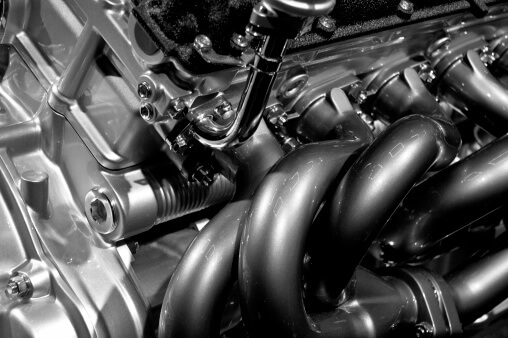
A durable long-lasting coating on metal components is essential to corrosion prevention and product performance. Any amount of corrosion can lead to field failure, consumer dissatisfaction, and at worse injury or recall of products. Chance of corrosion is highest when metal parts operate at high temperatures while exposed to moisture or other environmental elements. The polymers and binders used in standard metal coatings begin to breakdown due to direct heat and the expansion and contraction of the substrate caused by temperature changes.
Even if visible paint failures such as flaking or peeling do not present in the coating film, microscopic pits in the coating form as the components are heated. Water enters through these microscopic weaknesses and the metal inside corrodes and structurally weakens. Visible signs of corrosion include streaks or rust spots in a droplet pattern. Flaking and other problems due to poor substrate preparation also lead to corrosion. However, absence of visible signs of corrosion do not mean an absence of corrosion.
If you currently use or are considering high temperature coatings, reach out to FORREST Technical Coatings for a free high temperature coatings consultation.
How do high temperature coatings prevent corrosion?
High temperature coatings enrobe metal components in a polymer casing to prevent contact with moisture. High temperature formulations use silicone resins that resist very high temperatures and robust pigments that will not burn off during or after heating. They may also include appropriate additives, catalysts, and anti-corrosive pigments if necessary. All components must be designed for and tested at high temperatures for the anticipated in-service time to make sure film integrity will survive for the application.
Silicone resins used in high temperature coatings are based on the silicone-oxygen bond (also known as siloxane bond or Si-O bond). The siloxane bond is about 25% stronger than a carbon-carbon bond found in most organic resin structures used in typical industrial paints. Siloxane-bonds form a cross-linked structure when cured and produce a generally very hard, chemical resistant, heat resistant, and light-degradation resistant coating. These qualities prevent the breakdown of the coating film that protects the substrate and therefore prevents corrosion from beginning.
To read more about the technical specifications of high temperature coatings:
What temperature do high temperature coatings tolerate?
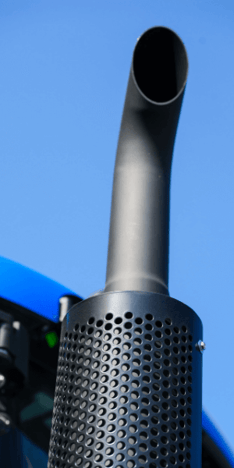
The term high temperature coatings broadly describe coatings that maintain film and color integrity at a peak or continuous high temperature. However, high temperature coatings can vary in temperature resistance from 250°F (121°C) to 1200°F (649°C). The pigments, binders and other additives are chosen to perform within a specific temperature range and should not be used outside of that range.
Temperatures above 1200°F exceed the heat resistant properties of the silicone-based resin and pigment technology currently available. Above these temperatures, manufacturers often choose a stainless steel or ceramic coating option. It is important to choose a temperature rating that matches the application, as each coating is specially formulated for that range.
Are high temperature coatings available in liquid, powder coatings and aerosols?
High temperature coatings in solvent-based formulations require less investment in equipment to apply. Modern high solids solvent-formulations meet most environmental health and safety standards and have higher coverage yields. They have the added benefit of being available in aerosols for small jobs or for touch up after the manufacturing process, transport, or installation.
High temperature powder coatings are also an excellent option for manufacturers as the electrostatic application method eliminates the presence of volatile organic compounds (VOCs) and has the possibility to reclaim unused powder. Powder coating requires a greater investment in equipment. Manufacturers often outsource the process to a powder coating applicator. If using a powder coating applicator or applying powder coatings within your own process, consult with your high temperature powder coating supplier about proper application as the properties differ from standard powder coatings.
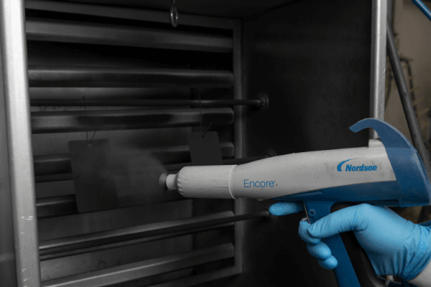
High temperature coatings are also available in aerosols for small jobs or for touch up purposes. High temperature aerosols can be used to touch up both liquid coatings and powder coatings - although paint may not match powder textures. Aerosols are intended for touch up of small scratches and mars. INFERNEX® high temperature paint aerosol line is color matched for this purpose.
What are the limitations of high temperature coatings?
High temperature coatings are high-hardness by necessity and tend towards brittleness. They can fail if impacted or if shocked with a very rapid temperature change. The product should be carefully handled during the coating process to minimize undesired effects.
Chemists perform a variety of impact tests, scratch tests, and if required for the end application a quench test in which the heated coating is rapidly cooled in ice water. The tests should accurately inform the customer of the performance characteristics for their desired application. The specifying engineer or manufacturer should work closely with the coatings chemist to select the product with the right balance of performance characteristics for the end use.
High temperature coatings chemistry is also limited by the highest temperature range of 1200°F (649°C). Stainless steel or ceramic coatings are the best option for temperatures above this range. Stainless steel is a more expensive option than coating. Ceramic-based coatings will tolerate higher temperatures but are significantly more brittle. Ceramic coatings cannot be repaired once chipped or cracked and so the end use and lifespan of the product should be carefully considered. Although powder coatings as well must be baked on by the manufacturer, color-matched aerosols are available for touching up scratches and mars during manufacturing, transportation, installation or throughout the lifespan of the product.
What should an engineer or manufacturer expect throughout the high temperature coating qualifying process?
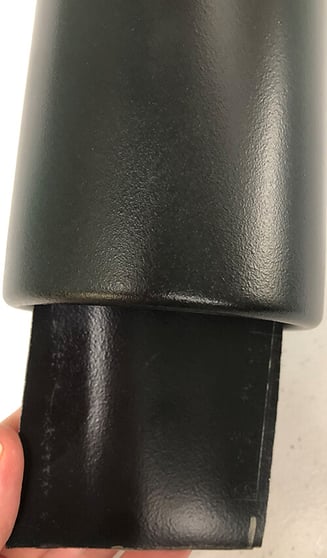
As part of the high temperature coating selection process, the coatings laboratory will work with the engineer or manufacturer to test the coating under the specific component’s operating conditions. At FORREST Technical Coatings, the sales and coatings laboratory works with the engineer or manufacturer to determine the best coating for their specific application and price range. The lab tests the selected products by subjecting panels to the specified conditions.
If further changes to the formulation are needed to make the coating perform differently for the end use, the R&D coatings laboratory will work with the manufacturer to meet these particular specifications. The chemists will often assist the customer in an onsite test run of the high temperature coating to make sure the preparation and application in the factory will have the best result for the coatings.
At FORREST, chemists are always available for troubleshooting and further product modifications as the customer continues to use the selected product. Get in touch with us if you have further questions about the high temperature coatings qualifying process.
What are the standard tests to measure performance of high temperature coatings?
ASTM standards are used to evaluate coatings to reach various specifications and industry standards. These ASTM specifications help a specifying engineer or manufacturer hone in on the right high temperature coating for their application prior to testing.
The tests most often performed on a high temperature paint are an adhesion test (ASTM D3359), a 240-hour salt-spray test to test for corrosion resistance (ASTM B117/D1654), an accelerated weathering test UV resistance (ASTM D4587-11), an impact resistance test (ASTM D2794-90), a gloss retention test (ASTM D523-14), and a pencil hardness test (ASTM 3363).
Engineers or manufacturers may also request other tests be performed specific to the product’s end use or for retrials of these tests to be performed and panels provided. It is recommended the customer provide representative samples of the substrate to the high temperature coatings provider for the most accurate testing.
What are US EPA Regulations and hazardous transportation considerations?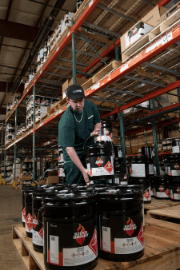
Volatile Organic Compounds (VOCs) are of concern as both indoor and outdoor air pollutants. The main concern indoors is the potential for VOCs to adversely impact health of the applicator or others exposed. While VOCs can also be a health concern outdoors, EPA regulates VOCs outdoors mainly because of their ability to create photochemical smog under certain conditions. Engineers and manufacturers should be aware of the specific state and federal requirements while selecting a product.
A coating supplier’s chemists and technical sales staff should be well versed in requirements and promise a trustworthy Environmental Health Services team to assure all regulations are met during production and shipment. FORREST works with customers in the US, Canada, China, South America, New Zealand, Australia, and Europe and has an Environmental Health and Safety team and lab chemists well qualified to assist in meeting local and national regulations in both product specs and delivery logistics.
Ready to find the right coating for you?
speak to a Coatings expert 1-800-537-7201



Copyright © Forrest Technical Coatings. All Rights Reserved
Site Created by Cayenne Creative